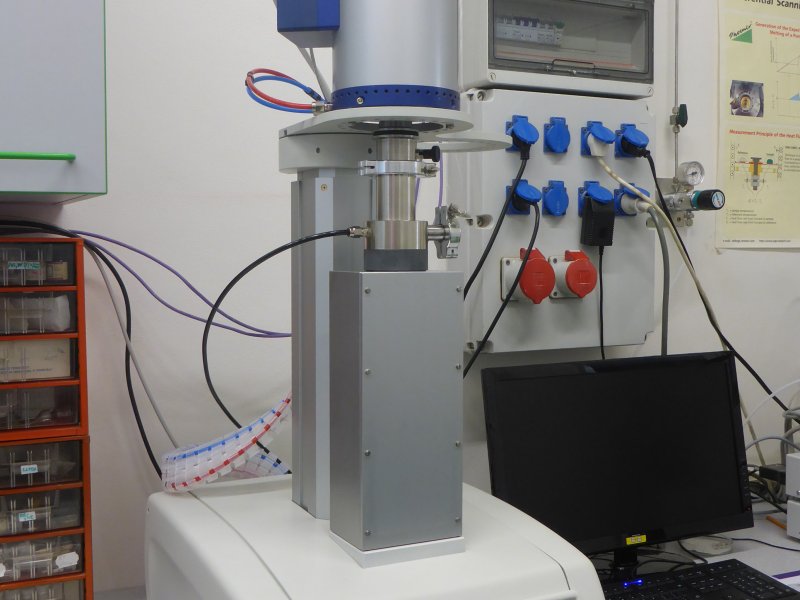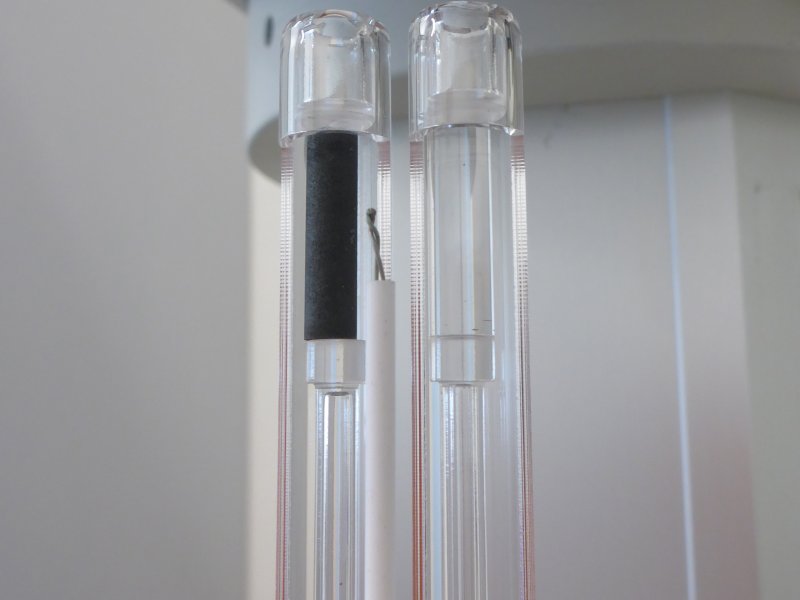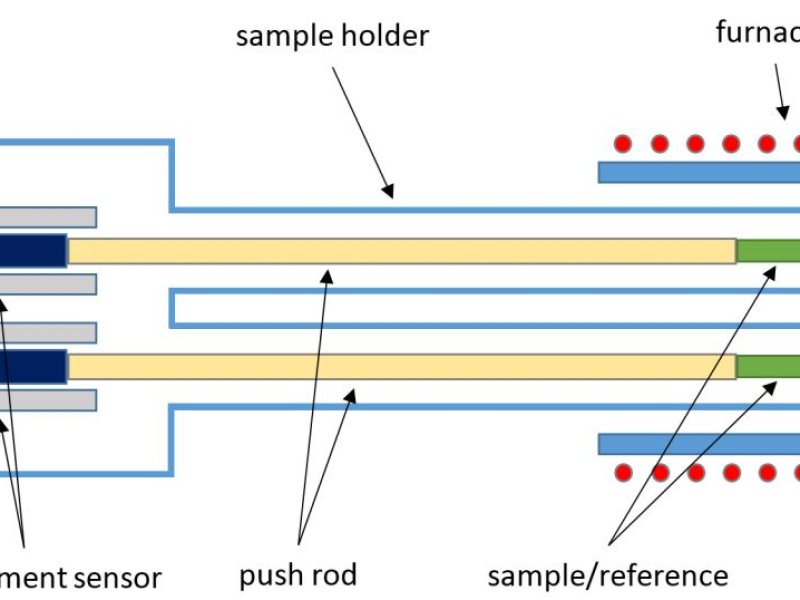Dilatometry (TD)
Dilatometry is an experimental technique that allows the measurement of volume changes of a sample caused by physical or chemical processes. These processes can be studied in dependence on temperature or time. The sample is placed in a sample holder having the shape of a tube with a closed end and brought into contact with the end of the tube and a push rod which transfers the length changes of the sample to the measuring system of the dilatometer. The push rod applies a constant and adjustable force to the sample throughout the whole measurement. The sample holder and the push rod have to be manufactured from the same material which has to have a minimal thermal expansivity and does not undergo any phase transitions in the studied temperature range. Fused silica (quartz glass) or Al2O3 are used for this application most often. The length changes of the sample during a defined temperature program (e.g. a linear heat-up or an isotherm) are recorded by an LVDT (linear variable differential transformer) sensor which works on the principle of an electric transformer with a core. From the dilatometric curve, it is possible to analyze temperature and kinetics of phase transformations and glass transitions or to calculate the coefficient of thermal expansion.
Our laboratory is equipped with a vertical dilatometer Linseis L75 PT. This dilatometer has a dual measuring system which allows the measurement of a sample and a reference with a known thermal expansivity or two samples simultaneously.
Technical specification:
Temperature range:
-180 - 1000 °C (low temperature furnace)
RT - 1600 °C (high temperature furnace)
Sample holder:
-180 - 1100 °C made of fused silica (type K thermocouple)
RT - 1750 °C made of Al2O3 (type S thermocouple)
Heating rate:
0,01 – 50 °C/min
Atmosphere:
Inert (Ar, He), vacuum, air
Sample:
The shape of a cylinder or a right prism with plane-parallel bases; maximum length of 50 mm; maximum cross-section of 7 mm.
Sample contact pressure:
150 – 1000 mN
Contact: RNDr. Jana Šmilauerová, Ph.D.





